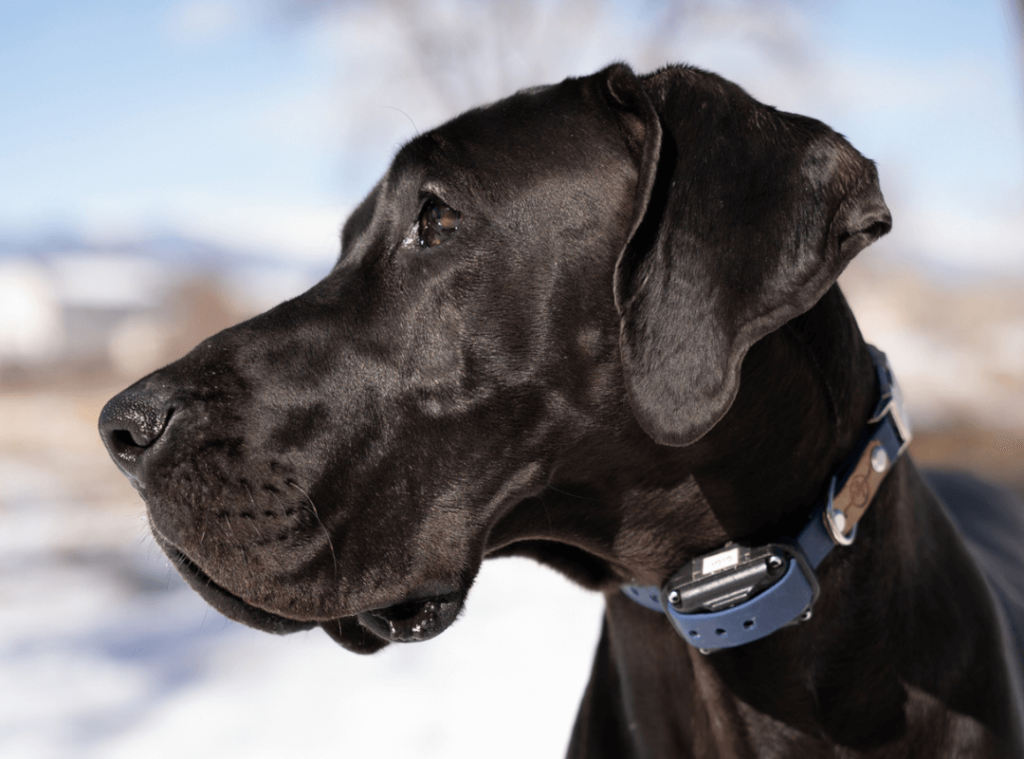It’s no secret that I’ve become a passionate advocate for good nutrition when it comes to my dogs. At one time I fell for some very common dog food marketing gimmicks and my dogs suffered as a result.
As a matter of fact, my experience seeing my heart dog harmed by a popular ‘high quality’ dog food sent me down a huge rabbit hole that I will not soon dig out of.
There are 300-400 new dog food brands every year in the U.S. All of them are trying to get the money out of your wallet, and will tell you what they have to in order to make it happen.
Are you wanting to avoid being confused or even scammed by pet food industry marketing tricks and misinformation? This post is for you!
5 Dog Food Marketing Gimmicks

#1 Dog Food Marketing Gimmick: “Family Owned”
A common phrase seen from dog food companies is the word “Family Owned and Operated”.
This statement makes dog owners feel like they are supporting a small business, helping a neighbor, or purchasing from a company that is run by people, not corporations. It feels good to purchase from “family owned” companies that appear to have been passed down from generation to generation.
I hate to burst your bubble here, but this is a big gimmick.
Of course, many pet food brands and manufacturing facilities have been passed from one family member to the next generation. This happens in a lot of businesses and it’s great, sure.
Small ‘family owned’ operations are just as susceptible to cutting corners as the big guys.
Unfortunately, small business playing in the big world of pet food are more likely to cut corners, because they just don’t have the clout or affordable access to resources, funding, research, and the supply chain that bigger companies do.
We see this at play with Fromm Family Foods. This family organization employs a lot of people and sells millions of dollars worth of food each year, yet, they don’t have a single qualified nutritionist on staff and never have. They do no feeding trials and their research efforts dried up circa 1990.
We can reasonably assume that isn’t the only place they are keeping their operation lean!
Midwest Pet foods (the makers of Sportmix, Earthborn, Ultimates, Venture, CanineX and Unrefined) actively market that they are a “family owned” business. They have been under fire from the FDA for sanitation practices at their plants that have resulted in harm or death to over 300 dogs to date. Midwest does not employ a single qualified nutritionist, either.
A lot of dog food companies rely on smaller ‘family owned’ manufacturing plants (that as above, employ 100’s of people and qualify as medium to large businesses) and a lot of those plants absolutely do have problems.
Family owned sounds nice on paper, but as above, just because Bob Junior now owns the plant instead of Bob Senior does not mean that they are actually producing something better for your pet. Chances are, they are just as money-driven as any other business out there.

#2 – Pet Food Brands with “No Recalls”
A lot of people mistakenly believe that “no recalls” is an indication that a pet food company is higher quality.
Many times however, companies issue recalls voluntarily out of an abundance of caution. They should, too, because the alternative to issuing recalls is literally to sweep issues under the rug and hope it doesn’t become a problem.
Of course, sometimes a company will have a very negative recall history. There is a huge difference between that and a recall that a big company issues for quality control reasons. It’s important to figure out how to sort out the difference.
Primal Pet Foods and Darwins are examples of brands with inexcusable recalls who have received some damning warning letters from the FDA as a result of sanitation and nutritional practices at their “family owned” plants.
Champion Pet Foods (the makers or Orijen and Acana) knew they had food on the shelves made with beef tallow that had been contaminated with euthanasia drug. Instead of recalling it from pet owners who had already purchased the food, they quietly pulled pallets from the supply chain and didn’t say a word otherwise.
People unknowingly fed it to their pets…and while no pets appear to have been harmed, the ethics of it are appalling.
A company attempting to uphold a history of “no recalls” is going to be much less likely to recall products for small (but notable) issues. Your pet gets to be the guinea pig.
My point here is this. “No recalls” doesn’t always mean that a company is operating ethically, safely, or with transparency.
So instead of judging a book by that cover, look at the nature of the recalls, how quickly they were responded to, and why they happened in the first place. Some companies should absolutely be avoided. Others? There is more to the story.
Thank those companies for recalling instead of letting pet owners bear the brunt of a human mistake.

#3 – A “Team of Highly Qualified Nutritionists & Veterinarians”
Did you know that the solid majority of pet food brands on the market don’t have a single qualified nutritionist on staff?
But if you look at their website, you’d be made to believe that the company has a massive team of highly qualified and highly educated people sitting in their home office, dedicating their time to formulating food for your pet.
I’m sure you’re starting to catch on here, but this too is a marketing gimmick.
With rare exception, what companies really mean when they say they have a ‘team’ of qualified people, is that they pay off-site 3rd party consultants to look over their recipes.
In many cases, those “highly qualified” nutritional consultants may do nothing more than check a box and verify that on paper, the food is nutritionally complete.
Off-site nutrition consultants have no allegiance to the brand or the formulas being marketed. A solid majority of foods on the market are actually generic recipes that were spit out by a computer.
While this usually results in foods that are generally good at keeping pets alive, it’s a far cry from the nutritional research and formulation processes of companies who actually have qualified people on staff.
This practice of marketing the idea of a ‘team of nutritionists’ is also very, very misleading to pet parents who want to know that a lot of dedication was actually made to their pet’s food!
Our recommendation? Look for food brands that have board certified Veterinary Nutritionists or at minimum, people with a PhD in Animal Nutrition on staff.
Tread cautiously though, because companies use all kinds of slick language to bypass actually saying that they don’t employ people for nutritional formulation and food science.
You can check your brand here: https://petnutritionalliance.org/resources/pet-food-manufacturer-evaluation-report/ and see if the results line up with what they say on their site.
If they didn’t reply to the Pet Nutrition Alliance or refused to answer? Run. Transparent companies have nothing to hide.

#4 – The “Good” Ingredients List
Marketing has taught all of us to be very, very wary of the ingredients in our dog food.
As a matter of fact, it was Blue Buffalo who largely pioneered this concept when they launched their ads showing pet parents how to compare ingredients.
The problem? Most “good” ingredients lists only look that way because of…you guessed it…marketing gimmicks!
Not only have companies strategically rearranged their ingredients lists to appeal to pet parents, they have intentionally replaced a few highly nutritious ingredients with “nicer sounding” foods that don’t provide anywhere near the same energy, fiber, protein, fat, mineral, or vitamin content.
Piggy-backing off the previous section of this blog, it’s important to keep in mind that many of these “nice” sounding ingredients lists and “quality” substitutions are being created and promoted by companies who have no qualified nutritionist on staff.
This includes Blue Buffalo, who came up with the entire concept of judging a food by the ingredients in the first place but only recently (2022) hired a veterinary nutritionist to correctly formulate their diets.
Because as we are learning, this is all about marketing.
Here are some common ways that dog food companies organize their ingredients lists to sell to you.
#1 – “Meat is the first 5 ingredients!”
This implies that the food has more meat in it than other foods.
However, it’s smoke and mirrors. Instead of using 10oz of chicken, they used 2oz of chicken, 2oz of dried chicken, 2oz of chicken liver, 2oz of whitefish, and 2oz of dried lamb.
The meat content is the same, it’s just been split up. Then all they have to do is split up their grains (by using multiple sources or through ingredient splitting) and other ingredients so that none of those weigh more than any of the meats.
#2 – “Fresh meat is the first ingredient”
Fresh meat is heavy, so it’s nearly always at the top of the ingredients list (which is based on weight prior to extrusion).
Fresh meat is 70% water.
Companies want you to believe that your dry kibble is loaded with meat because they show you a photo of a beautiful chicken breast and an ingredients list with “real chicken” as the first ingredient.
But after the fresh chicken is extruded into kibble, the moisture (and thus a solid majority of that heavy fresh meat) is gone. In many cases, the finished kibble will have less fresh meat in it than other ingredients.
This is why some companies use a meat meal, which is dehydrated before it’s used in the extrusion process and contains a lot more nutrition as a result. A kibble that contains some kind of meat meal or meat by-product meal will always have more meat based protein, amino acids and nutrients in it.
#3 – “Includes spinach, blueberries, and carrots”
In an attempt to appeal to consumers who want a ‘fresh’ or ‘holistic’ option, some kibble foods will include a range of fruits and vegetables from spinach to pomegranate and lay claim to the antioxidant benefits.
The bag will often contain beautiful and colorful photos of these ingredients, too.
But like fresh meat, fruits and vegetables are mostly water. To meet nutritional requirements, these cannot be too high on the ingredients list, either, otherwise it throws off the density and nutritional balance of the finished dry kibble food. They are nearly always listed near or after salt, indicating that they are less than 1% of the overall formulation.
As one board certified veterinary nutritionist put it, “it is fairy dust”.
Skip this and top your dogs food with real fresh fruit and veg. (Up to 5-10% of the overall diet is acceptable for treats and toppers like this).
#4 – Ingredient Splitting
This common trick allows dog food manufacturers to take a whole ingredient and split it up into multiple parts on the ingredient list.
This changes our perception of how much of that ingredient is in the food, as it can either be perceived as being “more” (for example, multiple meat sources as in the #1 example above), or “less” (by pushing the now lower-weight ingredients down on the ingredients list).
You’ve found ingredient splitting when you see a brand utilizing multiple forms of the same ingredient. For example:
“Peas, pea protein, whole peas, pea fiber, pea flour, green peas”
“Lentils, whole lentils, yellow lentils, green lentils, lentil fiber, lentil flour”
“Oats, oat groats, milled outs, rolled oats, oat fiber, oat flour”

#5 – “Holistic, Super-Premium, Functional, Human Grade”
There are many common words used by dog food companies to sell their products, and the vast majority of them are completely unregulated terms with absolutely not legal definition.
Holistic, for example, is often used to indicate a food that is somehow more ‘natural’. It’s a word that has been misused for so long that people associate it with a perception, not an actual meaning. Any food company can grab this word and throw it into their marketing.
Given how similar 99% of dog foods actually are to each other, even the ‘holistic’ ones, this particular term lacks any real authority to designate one food as ‘healthier’ or ‘higher quality’ than the next.
Super Premium is another word with no meaning at all. To the point of being laughable. As if being ‘premium’ weren’t enough, THIS food option is SUPER premium, ooooh!
See my point here? Words like “Super Premium” are there to make you feel some sort of way about the dog food. There is no legal definition for this term either.
Functional is the new “it” buzzword, courtesy of “Integrative, Functional, Holistic” Veterinarians and practitioners. Honestly though? All food should be functional. It is supposed to support health, right down to the cells.
I’m honestly concerned that some dog food companies have to tell us their food is ‘functional’ to get our attention.
Human Grade is complicated. There are some very loose regulations surrounding the use of this word. In theory, the ingredients should be sourced from suppliers where the intention of the food is for human consumption, and made in kitchens that prepare human foods, for example.
But once ‘human’ food is put into a dog food recipe, it’s no longer human grade as the final product is intended for use by animals. Not humans.
Food from suppliers intended for use in dog food doesn’t have to be trash; and truthfully, it’s well regulated. Keep in mind that the ‘human’ supply chain is just as susceptible to problems related to salmonella or otherwise.
Choose companies that have good ethics and practices and don’t waste your money, hopes, and dreams on the overpriced and wasteful ‘human grade’ marketing gimmick.
Your beloved pet is a dog, not a human. Given the opportunity, they will tear into your trash and happily eat all the guts out of a chicken carcass.

Anytime we post an article like this, we get a million questions about “‘well, “ok fine, what SHOULD I feed instead?”
Do you want the honest answer? Stop looking at the marketing and the ingredients lists. Look around at the literal billions of dogs that are quietly eating and thriving on veterinary recommended food brands. Those brands have qualified nutritionists on staff and dump millions of dollars every year into nutritional research and feeding trials.
For a comprehensive (and growing) list that addresses common brands/formulas as it relates to large + giant breed puppies (in particular), check out this spreadsheet:
THE MEGA GREAT DANE FOODS SPREADSHEET
You can also check your brand against the data in the Pet Nutrition Alliance Database. Notice how many brands only use nutritional consultants, and that’s if they even bothered to include their information in this database.
THE PET NUTRITION ALLIANCE DOG FOOD DATABASE
Transparent companies have qualified nutritionists on staff and absolutely nothing to hide.

Leave a Reply